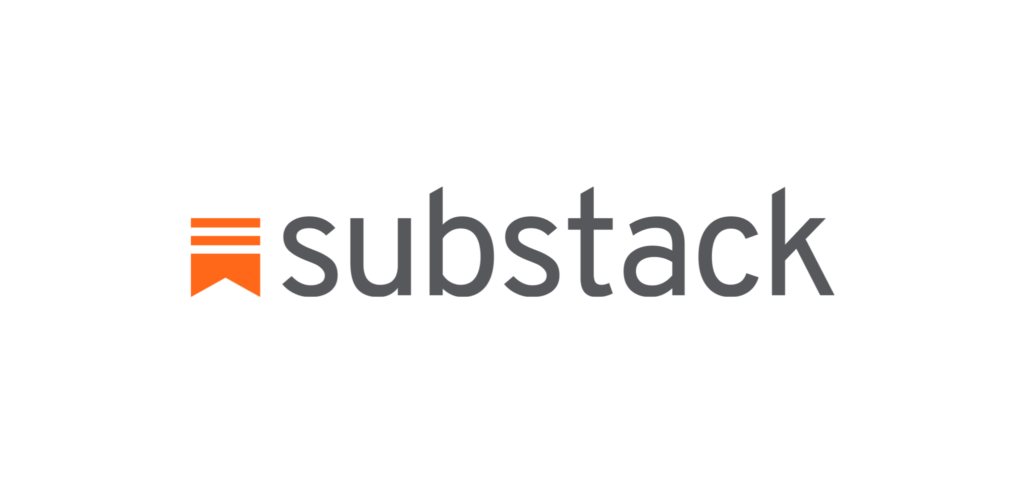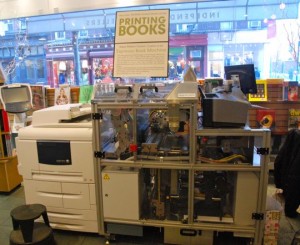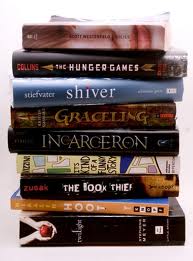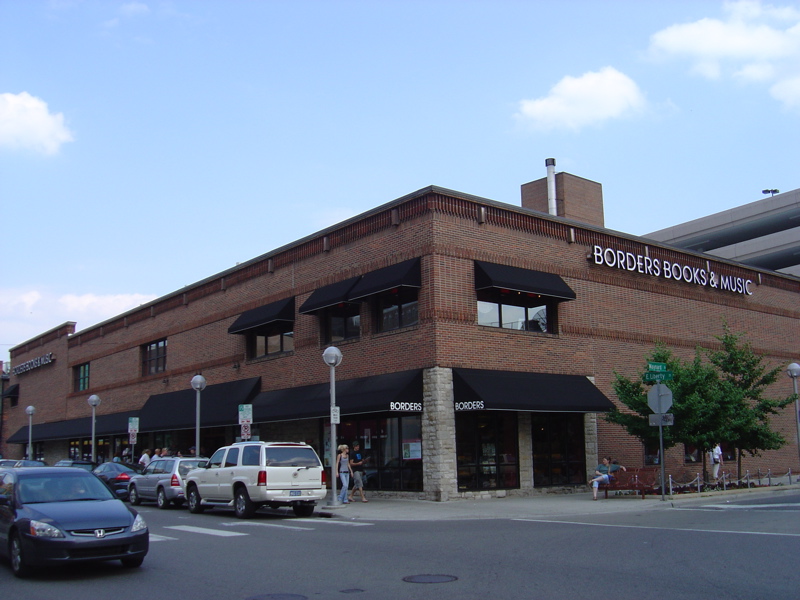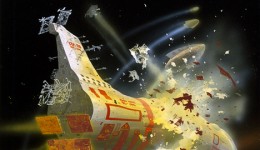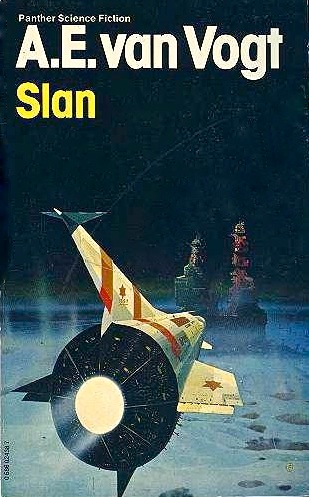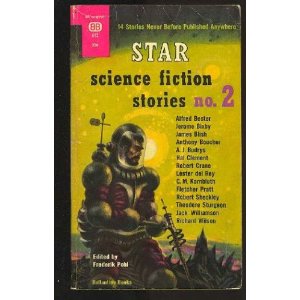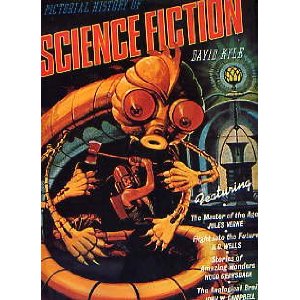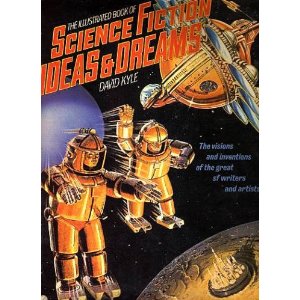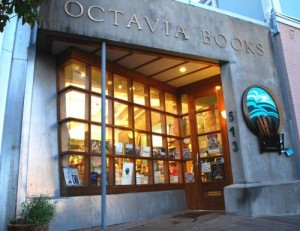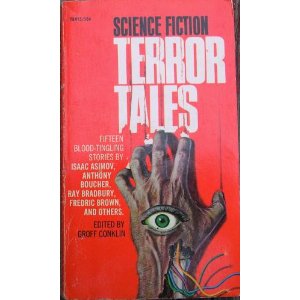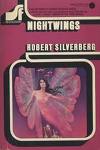
As readers and as writers, we’ve been watching the ecosystem of publishing, book distribution, and book retailing morph before our eyes on a continual (and seemingly accelerating) basis for at least the past five years. Are we stuck being onlookers to the March of Progress, having to content ourselves with whatever sort of literary landscape market forces leave us with? Or can we harness our powers as literary consumers and literary producers to help steer the market and possibly create a literary landscape we’d actually like to inhabit?
Many thousands of words have been written recently analyzing the evolving publishing world. Many issues are a-swirling in the present unsettled climate—agency pricing vs. wholesale pricing; Amazon vs. Apple and the Big Six publishing houses; Amazon vs. an alliance between Barnes and Noble and Microsoft; the efficacy and marketplace side effects of Digital Rights Management (DRM) for ebooks; and whether print books will survive into the third decade of the twenty-first century. Being both a reader and a writer myself, and potentially a publisher in the near-term future, the following articles have led me to do a good bit of pondering; so before we get around to my prognosticating, let’s take a look at a few recent articles, shall we?
Mark Corker, the founder of Smashwords, a major ebook publisher and distributor, discusses the implications of the federal lawsuit brought against Apple and five of the Big Six publishers for allegedly conspiring to fix ebook pricing and counter Apple’s rival, Amazon; Corker comes down in favor of the practice of agency pricing, favored by Apple and its publishing allies, versus the wholesale pricing preferred by Amazon, stating that allowing publishers and writers to control the pricing of their books will serve customers by ensuring a diverse marketplace. Preston Gralla, writing for Computer World, amplifies many of Corker’s points. Both articles came on the heels of author Scott Turow’s broadside, distributed to the members of the Authors Guild, of which he is the current president. Meanwhile, author Libby Sternberg (among others) supports Amazon and says the demonization of the company is out of line, as its competitive zeal is providing lower prices and greater accessibility to readers and consumers.
Amazon’s aggressiveness with its retail partners, typified by its pulling of 5,000 titles distributed by the Independent Publishers Group from its Kindle Store, has been inspiring a good deal of criticism and pushback. The Educational Development Corporation, a small publisher of children’s books, declared Amazon to be a “predator” and removed all of its titles from Amazon’s virtual shelves, costing itself $1.5 million in revenue but declaring they “were better off without them (Amazon).” Amazon’s sales of the Kindle Fire may have “fallen off a cliff” recently; big-box retailer Target will no longer sell the Kindle in its stores; and online retailing rivals eBay and Wal-Mart are both set to roll out greatly improved search engine technologies on their sites to better compete with Amazon.
Cory Doctorow, in a column written for Publishers Weekly entitled, “A Whip to Beat Us With,” describes how the Big Six publishers, in their zeal to not lose purchasing dollars to pirates, have actually shot themselves in the foot with their insistence on only selling books with Digital Rights Management (DRM). This has allowed Amazon to essentially “lock in” its vast customer base to its Kindle platform, since DRM does not permit Kindle owners to legally transfer their libraries of ebooks onto a competing platform. The Big Six publishers have thus ceded a great amount of market power to Amazon, allowing that company to steadily increase its fees and charges to the publishers who wish to have their books sold on Amazon’s Kindle Store, reducing the publishers’ margins (or blocking their access to the Kindle Store should they not come to terms dictated by Amazon, as has happened with Independent Publishers Group, distributors for the books of over 700 small presses).
Tor Books, the largest publisher of science fiction in the US, a subsidiary of German media conglomerate Holtzbrinck, recently reversed their policy on DRM. More than a decade ago, Tor released some of their titles as ebooks through a deal with Baen Books, but was forced by top Holtzbrinck managers to cease, due to Baen’s stand that they would only distribute ebooks without DRM. However, now Tor and their subsidiary imprints will return to their prior practice of distributing ebooks minus any DRM, citing customers’ preferences.
In a boost to Barnes and Noble’s Nook e-readers, currently second in sales to Amazon’s Kindles, Microsoft will be investing heavily in the Nook platform, and rumors are swirling that Microsoft will the Nook app a part of their upcoming Windows 8 operating system. This alliance represents Microsoft’s latest attempt to compete in the tablet market and Barnes and Noble’s latest effort to raise enough funds to remain competitive with Amazon.
So that’s the news of the publishing world. The majority of recent commentary regarding the changing literary ecosystem tries to gauge where things are most likely headed — i.e., what sort of literary ecosystem are we most likely to get stuck with? What will market forces dump in our laps five, ten, or fifteen years down the pike? What elements of the current ecosystem are most likely to survive, which will perish, and what may replace those elements that die off?
Based on these recent developments, I’ll put on my own Amazing Criswell sequined tuxedo and make a few predictions.

Within a few years, the Big Six Publishers will be down to the Big Five or Big Four, and one of them will be Amazon.
Margins are getting tighter and tighter in the publishing business. Several of the big publishers have traditionally made the bulk of their profits from their textbook publishing, which has benefited from a “captive audience” and whose continual cost increases have been absorbed by federal student loans. However, a great portion of textbooks will soon be distributed in ebook form, which should reduce prices (and margins) considerably. Also, pricing competition from Amazon (and other online retailers which rise to fight for pieces of Amazon’s market) will continue to put pressure on the profit margins of the traditional big publishers.
Here’s the rub — most of the current Big Six publishers are fairly small components of much bigger multinational conglomerates. Random House is a part of the German conglomerate Bertelsmann, which also owns the RTL Group (European radio and TV), Arvato (international media and communications), and Gruner and Jahr (European magazine publishers). Simon and Schuster is owned by CBS Corporation, whose primary businesses are commercial broadcasting and television production. HarperCollins is part of the sprawling News Corp, which owns newspapers in the U.S., Great Britain, Australia, and throughout the Pacific, in addition to running Fox Broadcasting, 20th Century Fox Studios, and satellite and cable television operations throughout Europe, Asia, and the U.S. The Hachette Book Group is a subsidiary of the French multinational corporation Lagardere, which operates radio and television stations, advertising firms, retail stores, aerospace firms, and sports and talent management agencies in forty countries. Only the Penguin Group (a division of the British conglomerate Pearson) and Macmillan (owned by the German company Holtzbrinck) are owned by larger companies whose main business is publishing (Random House may also be considered part of this grouping, since book publishing makes up at least half of Bertelsmann’s business — although a lot of their revenue comes from textbook publishing). The other conglomerates, for whom book publishing represents a relatively small part of their operations and a smaller part of their profits, may be greatly tempted to sell off or even dismantle their publishing arms as margins get tighter and tighter. Those members of the current Big Six who opt to remain in the publishing business will likely merge many of their existing imprints and concentrate more and more on sure-fire best-sellers (or those projects thought to be sure-fire best-sellers): books by celebrities, media figures, or prominent politicians, or based on popular media properties. A handful of old-line literary imprints, such as Alfred A. Knopf, Scribner, and Little, Brown & Company, may survive as money-losing prestige or “halo” businesses for their corporate ownerships. Alternatively, such famed imprints may be sold off and reemerge as independent small presses.
Independent bookshops will see a modest resurgence as superstores pull back to their strongest markets.
Just as our small, ratlike, mammalian ancestors found some breathing room to expand and evolve upon the extinction of the dinosaurs, so will independent bookshops and small, regional chains of bookstores reclaim some of their former market share as Barnes and Noble shrinks the brick-and-mortar retail side of their business to focus on their most profitable locations. Membership in the American Booksellers Association, the nonprofit industry association of independent bookstores, peaked at 5,500 members with 7,000 retail locations in 1995. Their membership continuously declined for the next fourteen years, bottoming out at 1,401 members in 2009. In 2010, they saw their first increase in membership in a decade and a half, a modest increase to 1,410 members. I don’t foresee their bouncing back to anywhere close to their peak of 5,500 members, but an increase to about half that number would not surprise me, as small business people in more and more communities, which have already lost their Borders Books and Music and which may soon lose their Barnes and Noble, seek to feed an appetite for book browsing and coffee drinking which was whetted by the superstores. I foresee a decent percentage of independent bookstores having a print-on-demand instant bookmaking machine on site to supplement their physical stock, perhaps relying upon catalogs that customers can browse through before making their POD purchase (see more below regarding how I would prefer to see the independent bookstore sector evolve).
A number of literary agencies will evolve into small publishing firms.
This shift is already beginning to occur. As the numbers of imprints and editors at the Big Six publishing firms continue to contract, and the majority of midlist authors move either to self-publishing or small presses, literary agents will find themselves with fewer and fewer opportunities to make money through selling clients’ books to publishers. To make up their losses, they will need to increasingly rely upon their skills as macro-editors and project packagers, adding value to writers’ work (and earning commissions and fees from writers) through pulling together teams of cover artists, book designers, publicists, and copy editors.
The lines between small presses and self-publishers will begin to blur.
As certain self-publishers show special skill or capability at promoting their works, they will begin attracting other writers who write similar books, but who lack the time or proclivity for successful publicity campaigns, who will request the self-publisher to distribute their work in exchange for a cut of the proceeds. Ridan Publications is a good example of this; Robin Sullivan, who had prior experience in both software design and public relations, began electronically publishing her husband Michael J. Sullivan’s fantasy novels, and she proved to be so successful at this that other writers, including Joe Haldeman and A. C. Crispin, began flocking to Robin’s imprint to distribute their ebooks. I believe Gavin Grant’s and Kelly Link’s Small Beer Press had a somewhat similar genesis.
Meanwhile, existing small presses will move more aggressively into the ebook realm and will find new ways to capitalize on their small staffs, short decision-making chains, and relatively quick production cycles (versus the traditional large publishers) to rival self-publishers in their speed of putting out fresh, tightly targeted product lines. The most successful small presses will emulate Baen Books in developing publisher-specific brand identities, as recognizable to the reading public as the personal brands established by certain best-selling authors (such as Stephen King and Tom Clancy).
As Amazon continues to encroach on what has been the territory of the Big Six publishers, relatively new online competitors will seek to compete with Amazon in the publishing space, copying its model or seeking to improve upon it.
Amazon has built and continues to refine a vertically integrated production, sales, and distribution company not dissimilar from the Hollywood studios of the first half of the twentieth century. Those studios locked in their talents and draws, the actors, actresses, directors, and screenwriters, through exclusive contracts, then distributed the films they produced through chains of movie studios that they owned. They then made money off ticket sales and the sales of concessions. Similarly, Amazon is in the process of signing top-tier authors to contracts, whose books they distribute both through internet sales and shipping of printed editions and electronic distribution through their Kindle devices. Amazon is also currently the favored distribution channel for self-publishers. Of even greater benefit to the company is that wide distribution and use of Kindle devices by their book-purchasing customers gives Amazon continual opportunities to cross-sell those customers on Amazon’s thousands of other types of items for sale, based on that customer’s past buying history (all with “free,” or rather pre-paid but subsidized, shipping included if the customer has signed up for Amazon Prime).
Until the federal government decides to insert itself and break up Amazon’s production and distribution arms (as they did with the movie studios in the middle of the last century), this is simply too lucrative a business model to not attract imitators. The Nook alliance recently entered into by Microsoft and Barnes and Noble may presage such an effort. Other major players in the internet commerce space, Apple or Google or Wal-Mart or eBay, may combine their resources to create business entities to directly compete with Amazon. A business such as the Independent Publishers Group (IPG), which currently distributes the books of over seven hundred small presses and which has recently crossed swords with Amazon over fees and percentages, may decide to move into the online retail space. Or companies which have not yet been formed may arise to challenge the current eight hundred pound gorilla of e-commerce. I believe a gradual abandonment of DRM by most publishers of ebooks will make it easier for competitors to Amazon and its Kindle platform to emerge, as existing Kindle owners will feel less trepidation at the thought of switching to a newer e-reader platform if they know they will be able to (legally and easily) transfer their e-libraries.
Print books will not go away. However, there will be relatively fewer of them; certain types of books will continue to be published primarily as print books, while other types will be published primarily as ebooks.
I anticipate that the majority of textbooks, technical books, reference books, popular nonfiction, and what I’ll term “disposable” fiction (fiction meant to be consumed as entertainment and then discarded, rather than held onto for further reference and re-readings) will be published primarily in ebook form. Books relying heavily on illustrations, books intended for children (many parents won’t want to entrust an e-reading device to a young child), “permanent” fiction (fiction which a reader intends to display on a shelf or to re-read), books purchased to be given as gifts, and books intended to be collectibles will continue to be published primarily in printed formats. Some publishers will do quite well by focusing on the book as a beautiful, cherished object and producing books which can be appreciated as handicrafts, as well as platforms for prose.
So that is where I believe the literary landscape is trending in the next five to ten years. While there is certainly value to be had in this type of prognostication, I feel that it is not sufficient. As readers, we do not need to act as passive consumers in the literary marketplace; as writers, we do not need to act as helpless, powerless “small cogs” in the publishing machine. Perhaps more so now than at any time in the past, we, writers and as readers, have the potential ability, if we wish to exercise it, to influence and to build portions of the emerging literary ecosystem. We can become, in law professor/author/blogger Glenn Reynolds’ term, an “Army of Davids.” But before we can do this, we need to figure out just where it is that we wish to go from here. As a reader, what sort of literary world do you want to be enjoying ten years from now? As a writer, what sort of publishing world do you want to be working in ten years from now? Here are questions we need to be asking (to which I add some suggested answers):
What do readers want?
— quality fiction that they enjoy and feel is worth their expenditure of time and money
— a reasonably reliable system of recommendations, i.e.: gatekeepers they can trust
— convenience and accessibility
— reasonable prices
What do some, but not all, readers want?
— a sense of community; the ability to share their love of particular books with others
— the joy and excitement of stumbling upon an interesting book they had no prior knowledge of
— the ability to communicate and interact with their favorite writers
— the ability to combine the acts of reading and book browsing with other pleasurable pastimes, such as eating and drinking, listening to music, or hearing a lecture
— beautiful, durable editions of favorite works, which are pleasing to the eye, nose, and hand
What do writers want?
— time to write
— opportunities and guidance to improve their work
— an audience
— opportunities to earn money from their work
— the appreciation of their peers and critics
What do some, but not all, writers want?
— the opportunity to write full-time
— control over the editing, formatting, and presentation of their work
— opportunities to interact directly with their readers
— opportunities to collaborate with other writers
— opportunities to promote themselves, their works, and works by other writers whom they admire and enjoy
So, taking these various needs and wants into account, what kind of literary ecosystem do I want to live in five or ten years down the road? If I could terraform that future ecosystem (to use a science fictional term), what would I create, within the bounds of the powerful trends I mention above?
Book Publishing
For the overwhelming majority of midlist writers, those without a history of best-selling books and those without a pre-existing “platform” of fame and public recognition, traditional publication by a large publishing house will be (and, for the most part, already is) a fading dream, a “winning the lottery” type of event. Most of us are simply going to have to do a whole lot more of the business end of things ourselves, if we hope to attain any presence in the literary marketplace. By the business end, I mean publicity, reader outreach, editing, and book design.

Some fortunate writers will find themselves with both the skills and the time to do all or most of these tasks themselves. Some will have the financial resources, thanks to a financially supportive spouse, inherited money, investors, or a stable and remunerative “day job,” to contract out all or some of these functions to specialists who perform work for hire. Some will have a spouse or significant other who is willing and able to perform these tasks. Some writers, whether working as a solo act or as the nucleus of a micro-publishing team, will discover great success at amassing an audience, whether through the exceptional quality of their books or through a highly effective business plan, or a combination of these.
Other writers, however talented they may be, will find themselves less gifted with resources. They will not have the time or the money to engage intensively with the business side of publishing or to hire contractors to do this for them. They may have some time and some money to invest, but not enough to amass more than a token readership. Or, like many writers throughout literary history have been, they may be socially withdrawn or self-isolating individuals, who lack the personality traits which allow for successful self-promotion and social networking.
As a reader, I don’t want writers who fall into that second group to be de facto barred from the marketplace, or only able to enter the marketplace in a feeble, exceedingly limited fashion. Just think how many immortal books we would now be denied had the skills of successful self-promotion been essential to publication and distribution during the past few hundred years. Hemingway and Vonnegut were formidable self-promoters. But was Kafka? Was Raymond Carver? In the realm of science fiction, was Philip K. Dick? Their works have only survived and come down to us readers of subsequent generations because they have had champions. Editors at major publishing houses, in the past, have often served as champions of writers unable or unwilling to champion themselves. But as I note above, there will be fewer editors at fewer major publishing houses in years to come, and those editors will have less freedom to take risks on pushing the work of obscure figures.
I think many writers enjoy helping other writers. I think this is so because writers were readers before they ever became writers, and thus learned to cherish other writers, and because writing is a solitary, lonely business and many writers hunger for a community of their fellow enthusiasts. I think as it becomes more and more crucial for us to assume greater responsibilities for the business side of our writing careers, it behooves the more successful among us to help our less fortunate, less resource-endowed fellow writers to pull themselves up by their proverbial bootstraps. Because we will benefit as readers and potentially as business people, and because creating community is a source of joy and fulfillment.
I envision the growth and spread of writers’ co-ops. Such co-ops may have as their nucleus a self-publisher who has achieved notable success on the business side and who wishes to share that success and share profits with other writers (such as the example of Robin and Michael J. Sullivan’s Ridan Publications). Or they may arise from a teaming of a group of writers who seek to pool and multiply their limited resources, each of whom can contribute something in the way of editing, book design, reader outreach, distribution, or publicity. Ideally, these writers’ co-ops would be made up of writers with broadly similar or compatible works, so that the co-ops, essentially small presses, could develop strong, memorable brand identities that set them apart in the minds of potential readers. The Baen Books brand means military-oriented, action/adventure science fiction and fantasy. Tachyon Publications has come to be known for highly specialized anthologies of science fiction or fantasy, compiled by erudite and opinionated editors. The Night Shade Books brand implies literary fantasy and horror in non-traditional settings. Purchasers of books from these publishers don’t only shop the books’ authors; they also shop the publishers’ full lines, because they have a good idea of the qualities books in those lines will have, and they like those particular qualities.
Much has been written about the diminishment of traditional gatekeepers in the literary marketplace. Some applaud this development. However, I believe that gatekeepers, as signalers of quality to potential readers, will continue to play a key role in the literary ecosystem. Otherwise, how can readers be expected to choose from the millions of ebooks and POD books which will soon be or are already available? Clogging one’s e-reader with too many poorly written but inexpensive ebooks can lead readers to throw up their hands and seek out more reliable sources of entertainment and pleasure. Writers’ co-ops can serve as a new mode of gatekeeping/quality signaling. In order to be desirable entities for writers to join, writers’ co-ops would have to earn in the marketplace a reputation for putting out quality work. In turn, in order to preserve their hard-won reputations for quality, the writers within a writers’ co-op would vet potential newcomers’ work before bringing them onboard. Promising beginners whose skills aren’t quite polished enough could be referred to writers’ workshops organized by the co-op, and their early, “not quite ready for prime time” works could perhaps be published as free or near-free editions, either online or as downloads, available for readers who would like to sample the works of promising up-and-comers and offer feedback. The co-ops could develop talent the same way major league baseball uses the minor leagues to develop promising ballplayers. Writers’ co-ops could hire outside editors for the books they publish, or they could utilize internal talent, with writers editing each other’s books.
All members of a writers’ co-op would be expected to publicize, not only their own works, but the co-op’s full line of books, utilizing personal blogs and websites, appearances at their region’s bookstores and libraries, and appearances at conventions and festivals. Baen Books has pushed this model very successfully; I’ve been to a number of science fiction conventions where a particular Baen author or editor has served as an advocate for the full line of Baen’s books, often presenting slide shows or multimedia presentations featuring the cover art of recently published or soon-to-be published books from a number of Baen’s stable of writers. This model lifts a good bit of the publicity burden from individual writers’ shoulders (who but the wealthiest or best supported can attend conventions or bookstore appearances all over the country, or even much more than an eight-hour drive from their home?). It also multiplies the publicity reach of a small press, assuming that small press features writers who live and travel in different parts of the country and whose websites, blogs, or Facebook or Twitter feeds are followed by separate audiences.
Book Selling and Book Buying
I love bookstores. I don’t want to see bookstores go away. I enjoy the act of browsing and the pleasures of discovery. I like “romancing” a book before I buy it, browsing it at different stores or on several visits to the same store, allowing my desire for it to build before I surrender to the purchase and take it home.
That said, as a dedicated book browser, I find that large chain stores can become boring. The temptation upon traveling to a different town to visit that town’s Barnes and Noble is lessened by my knowledge that this new Barnes and Noble will carry 99% of the same stock as my Barnes and Noble store back home.
A good part of the charm and attraction of visiting independent bookstores is not knowing what they may carry. Many commentators on modern American culture bemoan the creeping homogenization of American regions, cities, and towns, how a traveler to the outskirts of Albuquerque will find many of the same stores and restaurants as he would in the suburbs (or center) of Albany. In my preferred future of a gobsmacking multiplicity of small presses and writers’ co-ops, bookstores could differentiate themselves and offer increased value to readers by partnering with their regional presses and becoming advocates for those regional presses and regional writers. Most independent stores cannot carry the breadth of stock that a Barnes and Noble superstore can carry; none, of course, can carry the breadth of choices offered by an Amazon. At least not physically. However, new and greatly improved (and continually improving) print-on-demand (POD) services can conceivably allow even a small, intimate independent bookstore to offer the same choices as an Amazon, without the delay of shipping (for those readers who will continue to prefer printed books). I expect the most forward-looking bookstores to maintain at least one book-making machine in their store, in addition to their physical stock of books. Adjacent to the machine, they could offer browsers computers, printed catalogs of books, and, from the regional small presses, pamphlets with the cover and first chapter or first story of their various offerings. That way, bookstore owners could maintain on hand “sample” copies of their slower sellers and of tomes from their regional small presses, printing individual copies for customers as needed, avoiding the cost of maintaining a large inventory. Customers could enjoy a cup of coffee and a pastry while their selection is being printed and assembled (or, having sampled a book in the store, they could have an electronic copy downloaded to their device).
Bookstores could partner with regional small presses and local writers to offer book discussion groups and other social events. Local stores would still offer a full range of nationally distributed books (particularly those stores with book-making machines), but they could specialize in regional offerings. Conversely, small presses could rely upon both print-on-demand services (such as CreateSpace and LightningSource) and on book-making machines at their local booksellers to distribute printed copies of their works, selling their ebook versions on their own websites or through e-commerce sites. A terrific example of this sort of symbiosis between an independent bookstore and its local small presses is the mutually beneficial relationship between Borderlands Books in San Francisco and both Tachyon Publications and Night Shade Books (in fact, Jeremy Lassen, one of the founder partners of Night Shade Books, once worked at Borderlands Books). I could imagine tour groups setting up regional bookstore tours for avid readers; such tours would be justified by the fact that different stores in different communities would specialize in works from different regional small presses, offering literary tourists true diversity.
So, my fellow readers and writers, that’s my vision of tomorrow’s literary ecosystem. What’s yours? What would you like to build?
Like this:
Like Loading...
